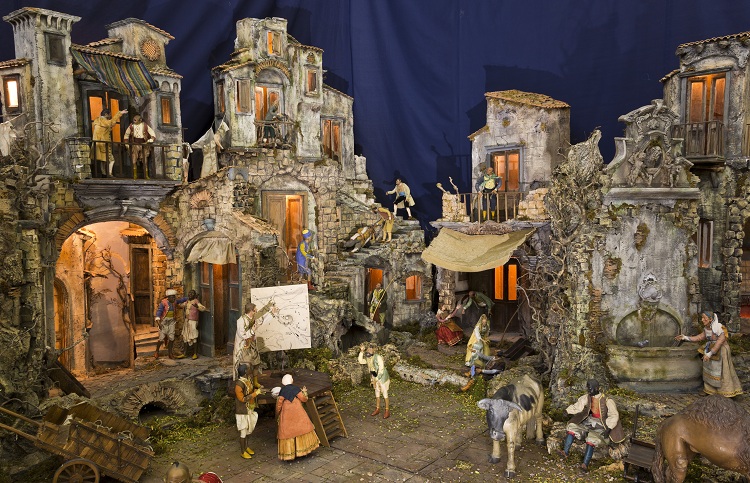Eduardo González
Christmas tradition of representing the scenes of the Nativity of Jesus with figures was introduced in Spain by King Carlos III from Naples, where he had reigned for 25 years. However, the real author was Queen Maria Amalia, very fond of cribs and whose premature death has been remembered since then with the nativity scene of the Royal Palace.
The tradition of Nativity scenes emerged in Italy in a way, at least, curious. Around the tenth century began to spread through this country and other parts of Europe the habit of representing with real actors the episode of the Birth of Jesus, whose maximum exponent were the Autos de los Reyes Magos.
The problem arose when those stagings, which were held in the temples, began to become authentic revelry in which alcohol ran and religious histories were treated very irreverently.
Consequently, Pope Innocent III prohibited in 1207 these theatrical performances, and to alleviate it, it was decided to replace the actors of flesh and bones by figures. The tradition tells that Francisco de Asís represented in 1223 in Tuscany the first Nativity scene in history. True or not, what is certain is that it was in Italy where, thanks to the Franciscans and the Poor Clares, the custom began to be extended by convents and homes.
The privilege of having the oldest present Nativity scene in the world is disputed by the Bavarian monastery of Flussen (with a manger from the mid-13th century) and the cathedral of Florence (from the end of the same century), but it was not until the 15th century when they began to make cribs like the current ones, with loose pieces.
The first known nativity scenes in Spain appeared, by Italian influence, in the territories of the Crown of Aragon. However, it was not until the 18th century that the custom took root.
When Carlos de Borbón was crowned King of Naples in 1734 as Carlos VII, the tradition was well known in his new kingdoms for at least 400 years, but the true golden age of the Neapolitan Nativity scene came in the seventeenth century, when they began to make those spectacular pesepri whose scenes, of great quality and with all the luxury of traditional details, were modified each year with a different set-up.
Encouraged by the Neapolitan cribs, Carlos and his no less enthusiastic wife, Queen María Amalia de Sajonia, moved the nativity scene to Madrid when the monarch was crowned king of Spain in 1759 as Carlos III.
María Amalia had the 7,000 figures that formed her nativity scene in Naples transferred to the Royal Palace of Buen Retiro and, as was often the case in those cases, the noble houses soon took over the new royal custom and mounted their own mangers in their palaces.
The queen died the following year of tuberculosis with only 35 years, and Carlos III, in tribute to his wife, decided to build a manger every year in the Royal Palace so that the town could visit, which helped to extend the custom in the humblest homes.
To that end, the king commissioned the Royal Workshops to manufacture the so-called Belén del Príncipe(Prince’s Nativity scene) for his son, the future Charles IV. Many of its pieces did not survive the War of Independence or other conflicts, but the Belén del Príncipe, formed by Neapolitan, Genoese and Spanish figures, remains one of the most important belenistic groups of the eighteenth century. Faithful to the Neapolitan custom, every year the layout of the pieces is modified and new figures from the Italian workshops are introduced every so often.






